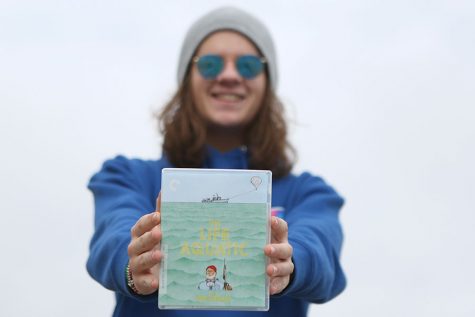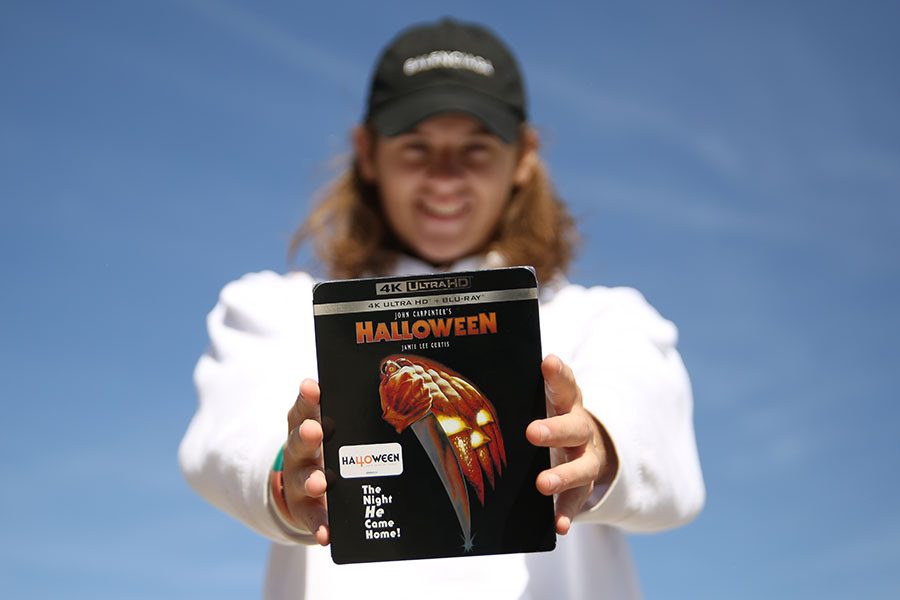Opinion | Bona Fide | “Halloween”
A Review of John Carpenter’s “Halloween”
WARNING: “Halloween” is rated R by the MPAA for sexual content, horror violence and language.
In honor of the annual holiday celebrated every year by American children dressing up in costumes going door-to-door in hopes of a special treat, I will share my take on the perpetual classic “Halloween” (1978).
The beginning of an era, “Halloween” is a must-see because of its originality and ability to set the standard for all horror films to come through a terrifying, well-directed and–above-all–a stylistic horror masterpiece.
The film opens with Michael Myers on Halloween night, 1963. At six-years-old, Myers unknowingly murders his sister and is left in a mental hospital for the rest of his life.
The night before his court hearing 15 years later, Myers escapes the hospital and returns to Haddonfield to finish what he started. Dr. Loomis (Donald Pleasance), Michael’s doctor, sets out to find him before he wreaks havoc on the small town of Haddonfield.
Dr. Loomis: “I met him, 15 years ago; I was told there was nothing left; no reason, no conscience, no understanding in even the most rudimentary sense of life or death, of good or evil, right or wrong. I met this… six-year-old child with this blank, pale, emotionless face, and… the blackest eyes – the Devil’s eyes. I spent eight years trying to reach him, and then another seven trying to keep him locked up, because I realized that what was living behind that boy’s eyes was purely and simply… evil.”
Filmed on a shoestring budget of $300,000, which led to a $47,000,000 run at the box-office, “Halloween” certified John Carpenter as a filmmaker to stay.
It’s success spawned several sequels, seven to be exact, not including Rob Zombie’s re-imagining of the classic and its sequel and David Gordon Green’s latest “Halloween” film that released earlier this month, which is a direct sequel to the original, Oct. 23.
Writer/director John Carpenter created something truly special. “Halloween” jump-started the slasher genre.
His ability to take a simple concept with little to no background on the serial killer Michael Myers and terrify audiences for 40 years and counting is an undeniable feat and was groundbreaking at the time.
While Alfred Hitchcock’s “Psycho” (1960) paved the way for psychological thrillers, “Halloween” gave birth to the era of slasher horror.
Carpenter casted Jamie Lee Curtis, daughter of iconic “Psycho” (1960) star Janet Leigh, as the terrified babysitter who must survive Michael a tribute to the star-making performance Alfred Hitchcock provided Leigh. Nonetheless, Carpenter did exactly the same for Curtis.
The performances of Donald Pleasance and Jamie Lee Curtis outshine any other in the picture. Curtis’ portrayal of the straight-arrow Laurie Strode perfectly balances Pleasance’s portrayal of the wise, all-knowing doctor that understands Myers better than any other individual on the planet.
Cinematography and camera work within “Halloween” are beyond advanced and reconcile that of artistic intent and horror. Carpenter above anything created a film that would hold up for decades while still capturing the time period in which it was released.
The iconic score composed by none-other-than-the-mastermind himself John Carpenter is haunting and creeps into every scene seamlessly hiding mysteries around every corner. The theme of “The Shape” has become more than a piece of music and is a staple in Halloween culture all over the U.S.
Although messy at times and cheesy to the modern-day filmgoer because of practical effects and rather unconvincing deaths, “Halloween” is still held in high regard for its creativity and ability to be a baseline for future horror films to come.
Check out “Halloween” on Decider to find the perfect streaming service and be sure to watch Green’s “Halloween” sequel–the best since the original–in theaters now.
Your donation will support the student journalists of Eureka High School - MO. Your contribution will allow us to purchase equipment and cover our annual website hosting costs.

This is Margherita's fifth semester on staff where he serves as an opinions writer for the EHS_hub. Marghertia enjoys discovering new music, traveling...

This is Peterson's seventh semester on staff where she serves as the Managing Editor for both the Eurekana Yearbook and EHS-hub. Peterson enjoys sleeping,...



















